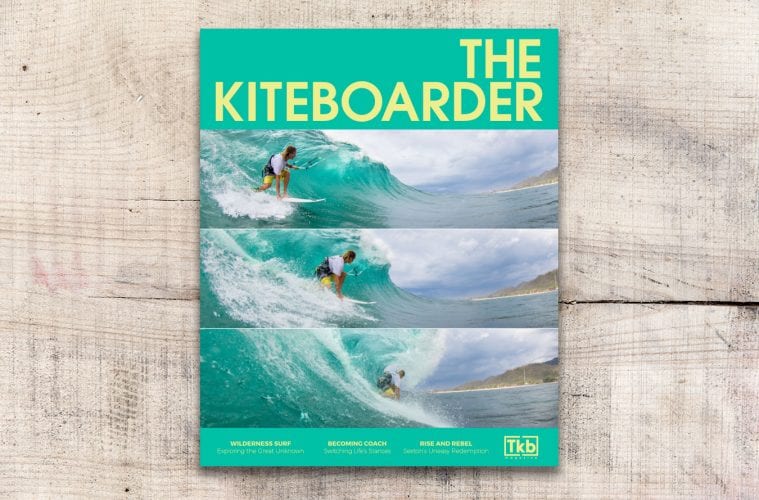Choosing a cover is probably one of the most difficult aspects of my job. The limitless considerations can present torturous variables to weigh: athleticism, the dichotomy of surf/freestyle, the contextual implications within the progression of the sport”¦ the list of hard and soft qualities go on forever””and don’t get me started about trying to select an exclusive image in the age of Facebook and Instagram.
The cover is the capstone””it represents the integrity of 120 pages of original content that an editorial team has labored on for weeks if not months. The cover should offer such a complex matrix of visual significance that it deserves to be revisited in between dives into long form content. And since we build our story concepts from the ground up””the cover’s always got some heavy lifting.
First in the lineup inside this mag, The Wave Out Front on P20 is particularly important to me partly because I was supposed to be on this trip. Coleman had the connections and I selfishly slotted myself as the photographer, but when the forecast window shifted and schedules misaligned””I had to call in a true professional to get on the plane and snag the shots. Probably best I didn’t make it, but worthy of note, this magazine’s graphic designer somehow backdoored that trip””what a little snake.
While I love photography, I’m an athlete at heart and unlike Dutch photographer Ydwer van der Heide (interview on P98), sitting on the sideline for a great photo is still an uneasy proposition. In this issue, we also asked what happens when the golden goose lays the final egg on P56 and explored how the seasoned athlete is forced to improvise. I can’t help but footnote how the door between athlete and coach in the surf world is revolving””the correlation between age, skill and style is not an expiring proposition. Sure the young guns will rule for the time being with their aggressive risk taking, but the older surf legends have staying power, a classic style and a place in the present progression: once a skilled tradesman, always a skilled tradesman.
Then there’s this East Coaster everyone’s been talking about””Matt Sexton””an underrated entrepreneur skurking on the periphery of our industry. It turns out Matt and I had met somewhere in the bars of Mexico long ago in the trenches of brand warfare. We had a laugh; his themes of rebellion are those I see in a lot of people I truly admire inside and out of the kiteboarding industry, and telling his story (P80) is one which sets the cornerstone of this magazine.
Back to the cover””we chose a sequence which isn’t by any means the norm, but it’s this iconic backdoor approach that’s been ingrained in my mind throughout the course of this issue’s construction. What’s the backdoor exactly? It’s the sneaky cheat, the come from behind; it’s the longshot into the green room. There’s the barrel, and then there’s the backdoor into the barrel; and this three-panel sequence of Rob Kidnie is the first vantage I’ve seen that captures this audacity with a kite.
A few years ago I had a conversation with photographer Jason Wolcott about how to shoot the backdoor. We both seemed to be thinking the same thing””capturing it would be punishing but the results would be stunning. Shooting inside the barrel is treacherous, maybe lethal, not just because you’re placing yourself in the brutish top to bottom conveyor of the wave, but because you’re crossing paths with a kitesurfer threading a board, replete with lethal sharp kite lines, a club-like control bar, a sheet of resonated fiber-wrapped polystyrene and an elastic leash to boot. The backdoor shot is an awkward choreography of two humans comingled with a ton of sharp implements through a powerful and punishing moving freight train of a tunnel. Thank you Jason Wolcott””but that’s another story.
Stoked on what’s inside? Feast your eyes on the summer issue of Tkb. Subscribe here: www.thekiteboarder.com/subscribe




